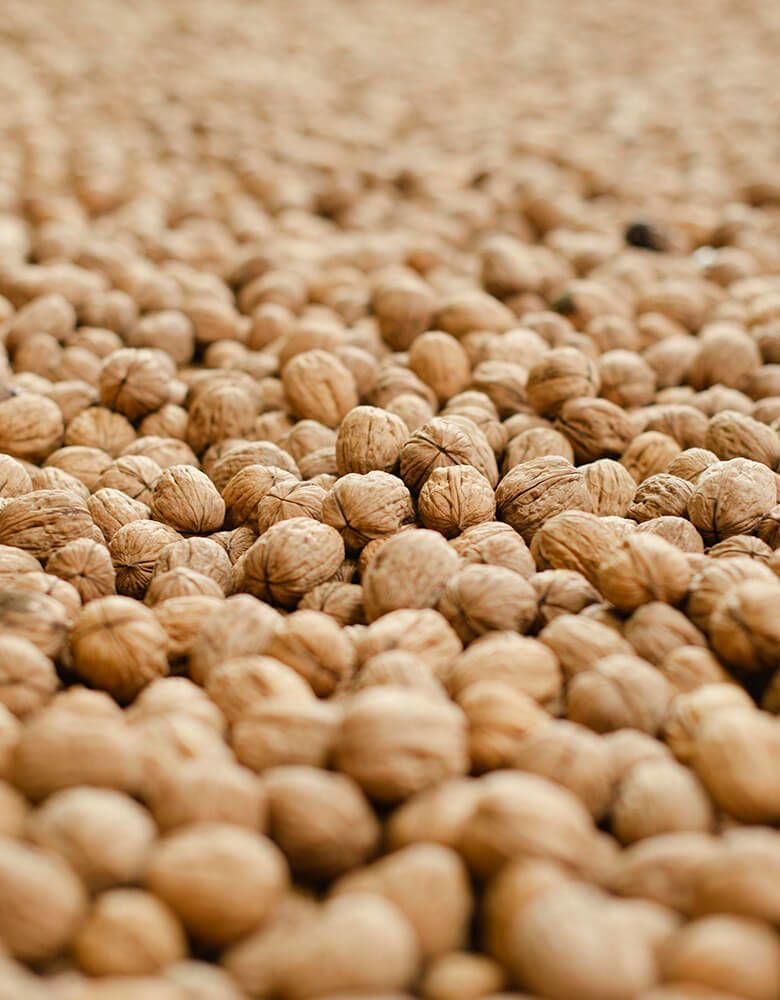
Processing

Processing
The outer green husk is removed by a huller and the nut is mechanically dehydrated (air-dried) to the optimum 8 % moisture level. This prevents deterioration of the nut and protects its quality during storage. Walnuts are stored until needed for cracking. California walnuts are protected from contamination because of the nut’s double envelope of hull and shell while on the tree.
Walnut Packing
Walnuts are transported to a packing plant where they are graded into two distinctive types, in-shell and shelled.
In-shell Walnuts
Following drying, sizing of the in-shell nut occurs. In-shell walnuts are sized as jumbo, large, medium, or baby according to USDA standards.
Shelled Walnuts
Walnuts for both consumer and industrial use are removed from storage as needed and sent to the shelling department where they are mechanically cracked. Kernels are air separated from the broken shells and then moved through electronic color graders and screened into a series of sizes. Next step, they are hand-sorted and physically inspected by trained sorters to ensure an end product that is clean, well-dried, and of specified color, as determined in comparison to the official walnut color chart. Tolerances for total and special defects are specified for each grade. The walnuts are then certified for quality and USDA standards — now they are ready for packing.
Laboratory tests, both chemical and microbiological, are conducted to meet strict regulatory agency and food safety requirements.
Find more information under Food Quality & Safety.